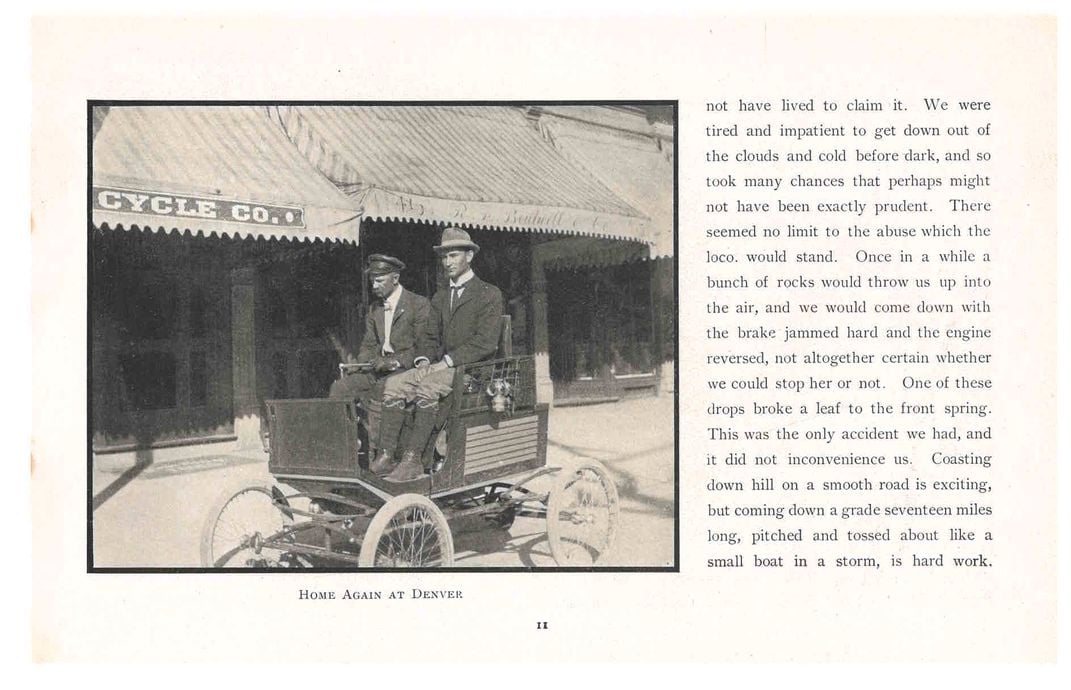SMITHSONIAN LIBRARIES AND ARCHIVES
Ascending Pikes Peak in a Locomobile
Over 120 years ago, two men climbed Pikes Peak in a new kind of steam-powered vehicle - the locomobile
/https://tf-cmsv2-smithsonianmag-media.s3.amazonaws.com/filer_public/e3/00/e30069c6-2d3c-4910-a3c5-b1357e012f04/locomobile-co-of-america-up-pikes-peak-and-elsewhere-in-a-locomobile-page-4.jpg)
Two men set off to ascend a mountain located in Colorado called Pikes Peak. Their transportation was a vehicle called the Locomobile, and this trade catalog traces their journey on an August day over a century ago.
The trade catalog is titled Up Pike’s Peak and Elsewhere in a Locomobile (1901) by Locomobile Co. of America. It begins with a descriptive account of the journey, written by W. B. Felker, titled, “Up Pike’s Peak in a Locomobile.” Mr. Felker’s companion for the trip was Mr. C. A. Yont, an amateur photographer. Their goal was to drive a Locomobile to the summit of Pikes Peak at an altitude of over 14,000 feet.
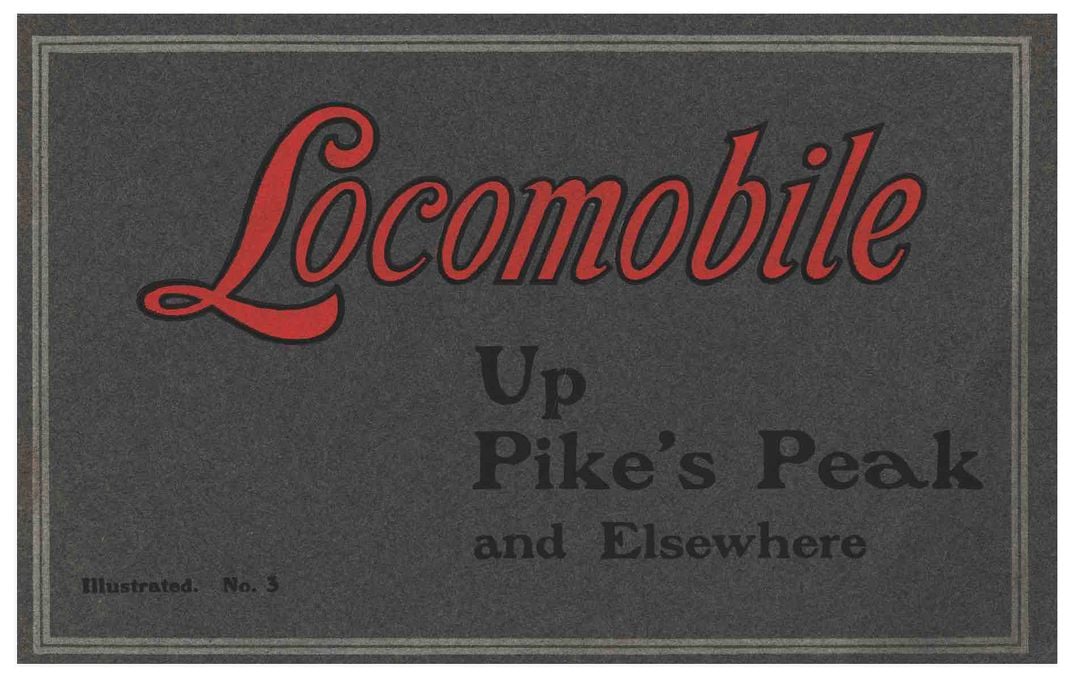
Before we follow their journey, let’s learn a little about the vehicle they used. It was a steam vehicle called a Locomobile. Several testimonials written by satisfied customers are shared at the end of this catalog. A common theme found throughout these testimonials is the vehicle’s ability to handle hills, long stretches, and poor road conditions.
One testimonial, dated December 15, 1900, was written by Dr. W. B. French of Washington, D.C. According to that testimonial shared on page 22, Dr. French had ridden 5,880 miles in the Locomobile since February 21, 1899, averaging about 580 miles per month. The doctor commented, “This mileage includes many country runs adjacent to this city, over some of the most villainous roads that were ever made, but the ’Loco’ will go even over such roads if it is given steam and some little experience in handling.”
Throughout these testimonial pages, there are also images of Locomobiles in various locations. The image shown below illustrates three Locomobiles on the road leading across the dam at Crystal Springs Reservoir in California. Its caption in the catalog points out “the steepness of the road at the right leading up to the top of the dam.”
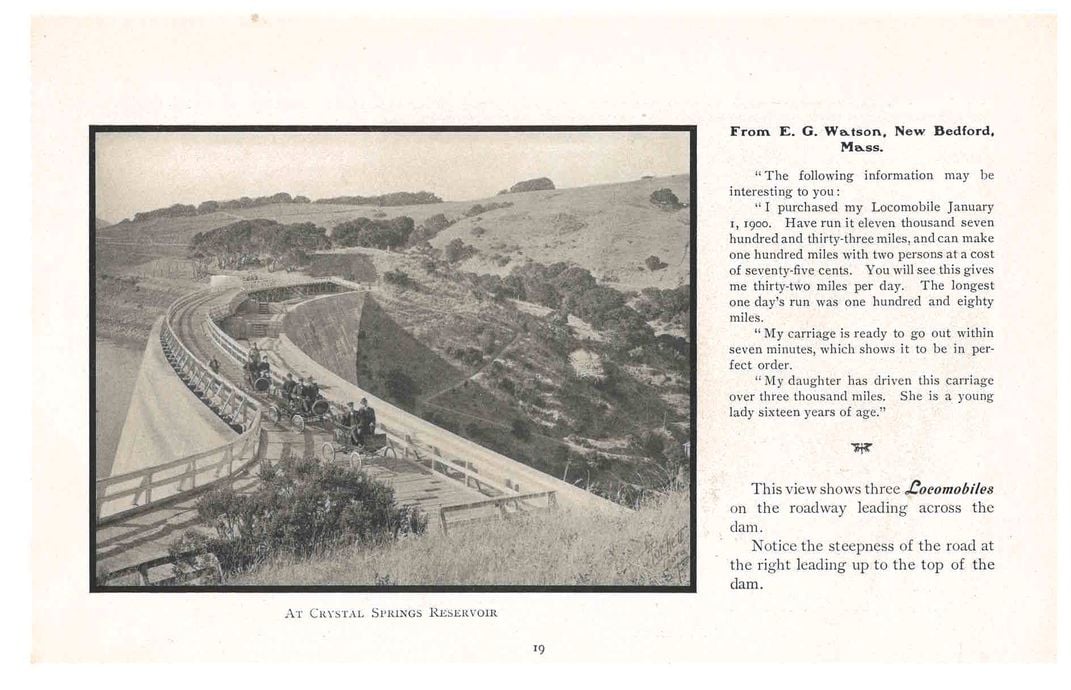
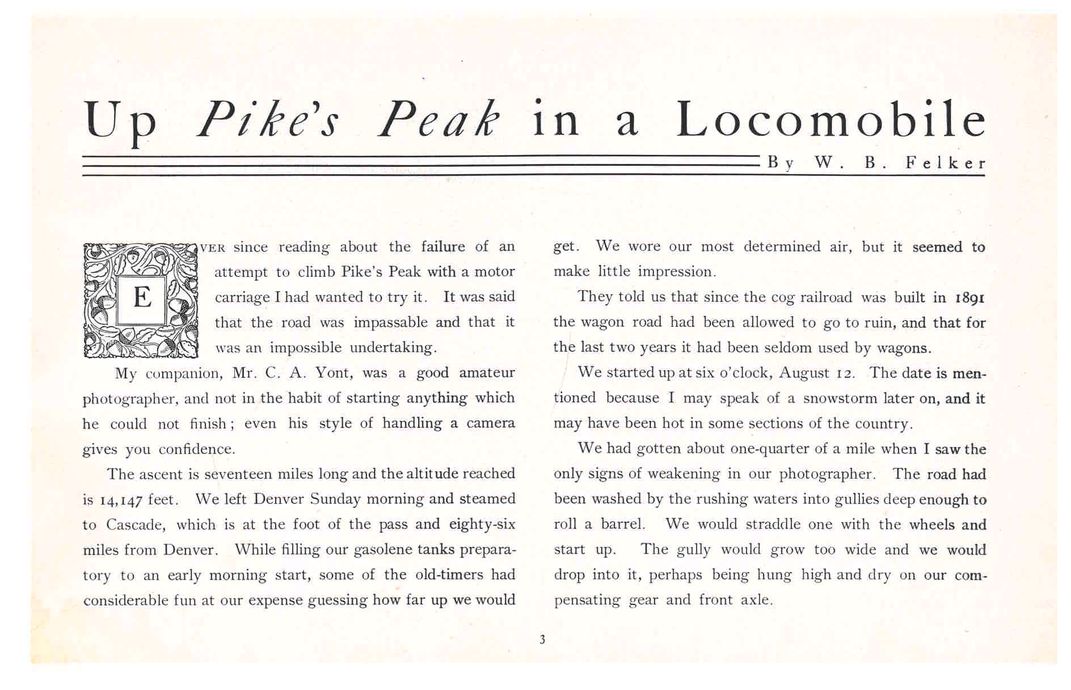
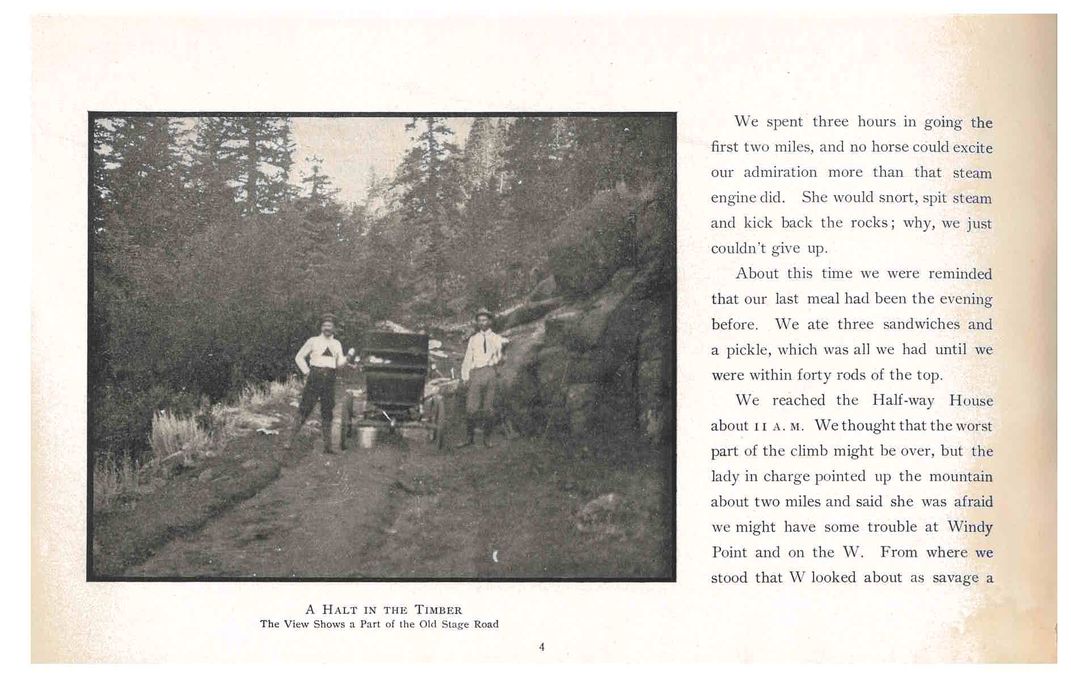
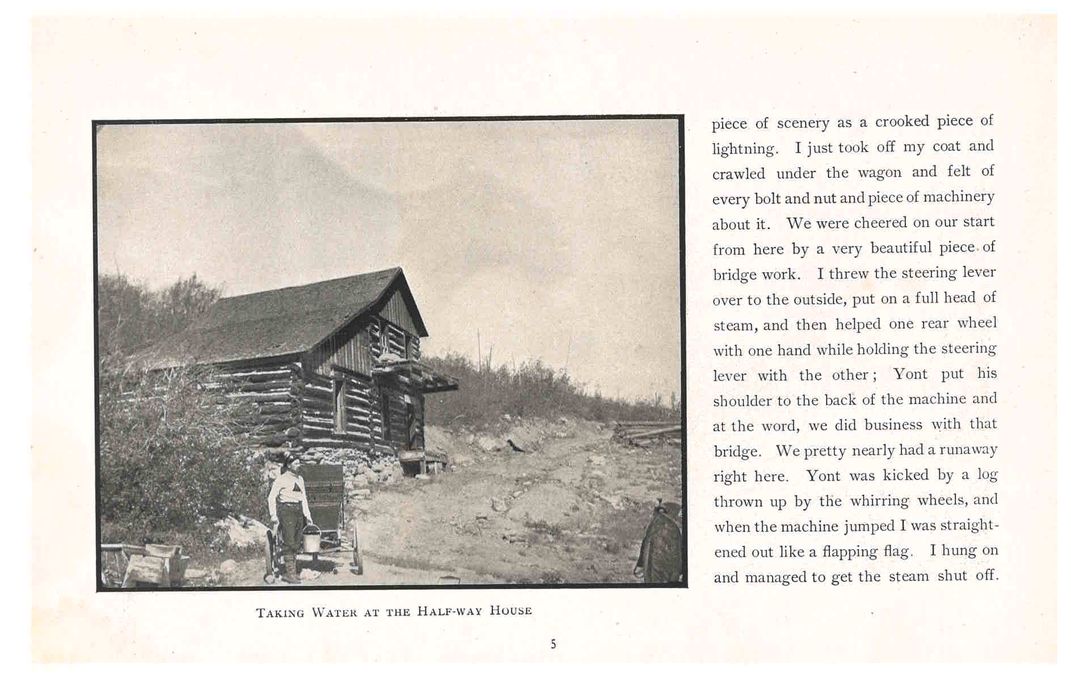
But the lady in charge informed them they “might have some trouble at Windy Point and on the W.” Mr. Felker writes, “From where we stood that W looked about as savage a piece of scenery as a crooked piece of lightning.” That led to checking all the machinery of their vehicle, including every bolt and nut, before continuing their journey.
Soon after setting off, they reached a bridge where they “pretty nearly had a runaway…” Mr. Felker writes, “Yont was kicked by a log thrown up by the whirring wheels, and when the machine jumped I was straightened out like a flapping flag.” He continues by remarking that he had “seen some rather bogus bridges, but that beat me.”
As they continued along, they had the opportunity to marvel at the “Grand View,” illustrated below, which from his description appears to be exactly that. And another landmark was “Windy Point” for which Mr. Felker writes, “One knows when they get there.”
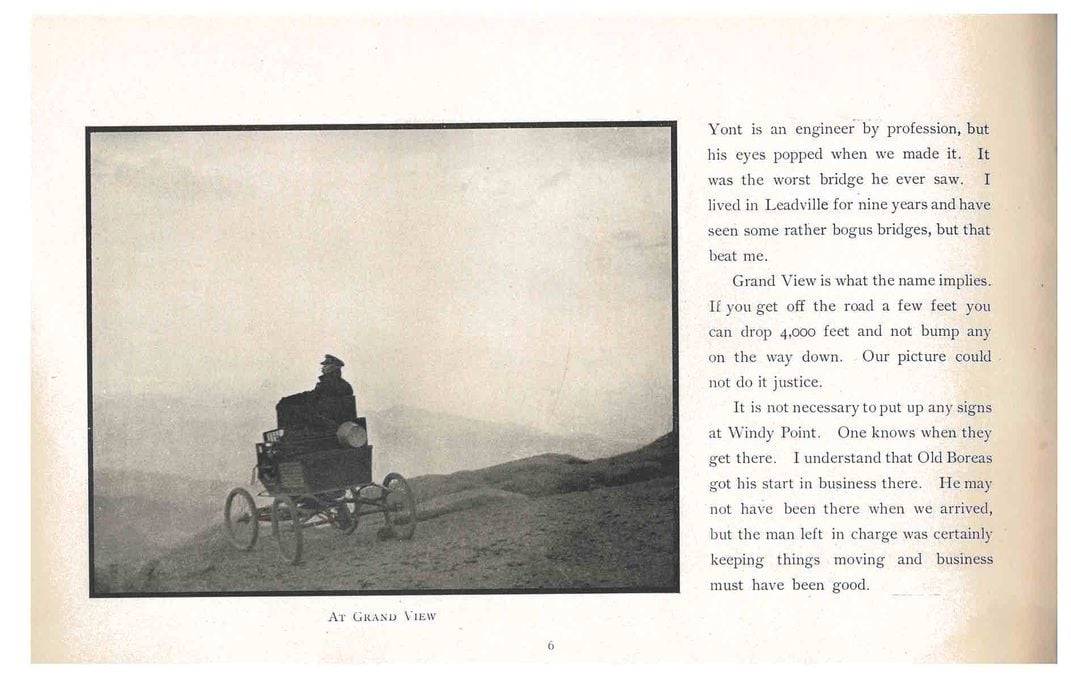
The lady at the “Half-way House” had warned them of the “W” but it turned out to not be as “formidable” as they had feared. For an idea of how the “W” looks, Mr. Felker suggests turning a letter “W” sideways. Though he cautions that it does not convey how a person actually feels while “on one of the points of the W about 13,000 feet up in the air.”
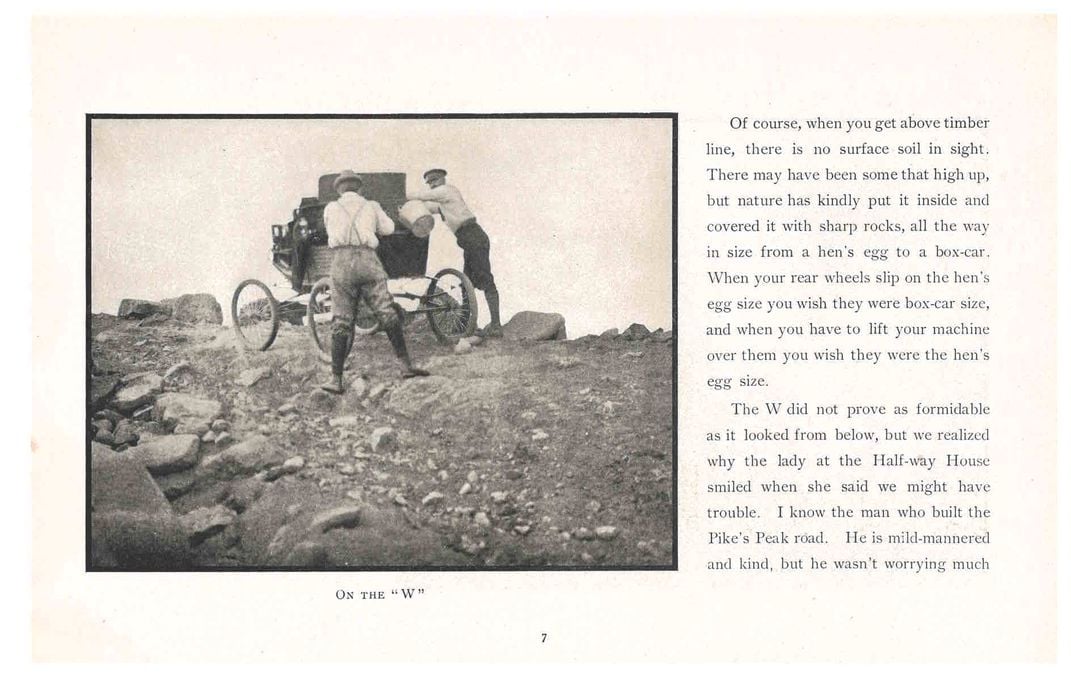
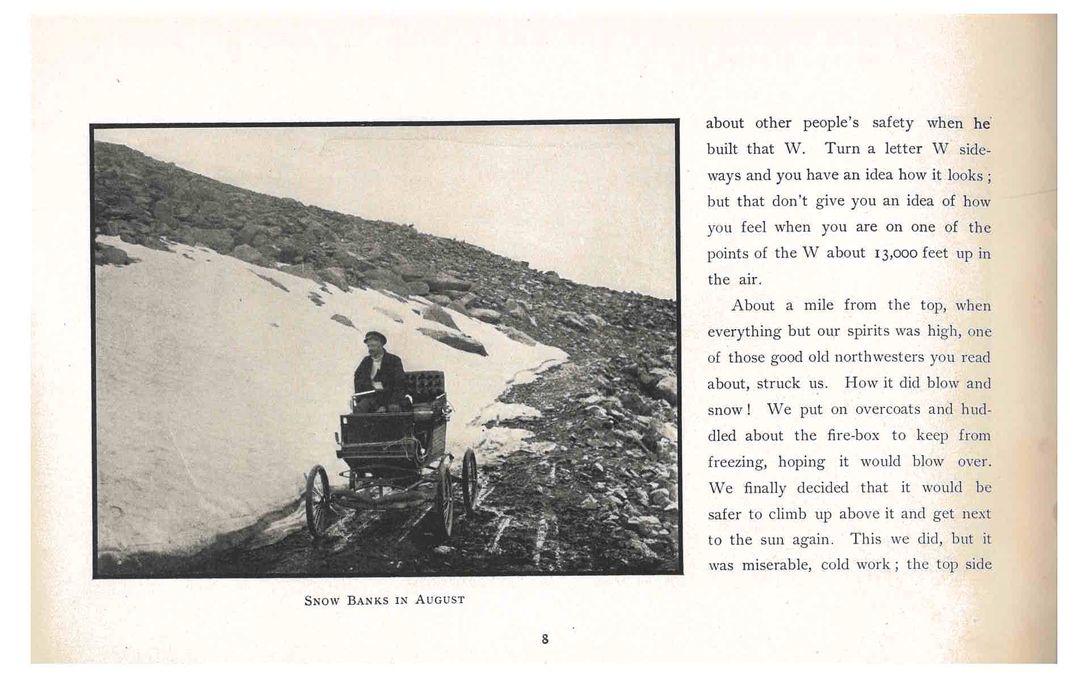
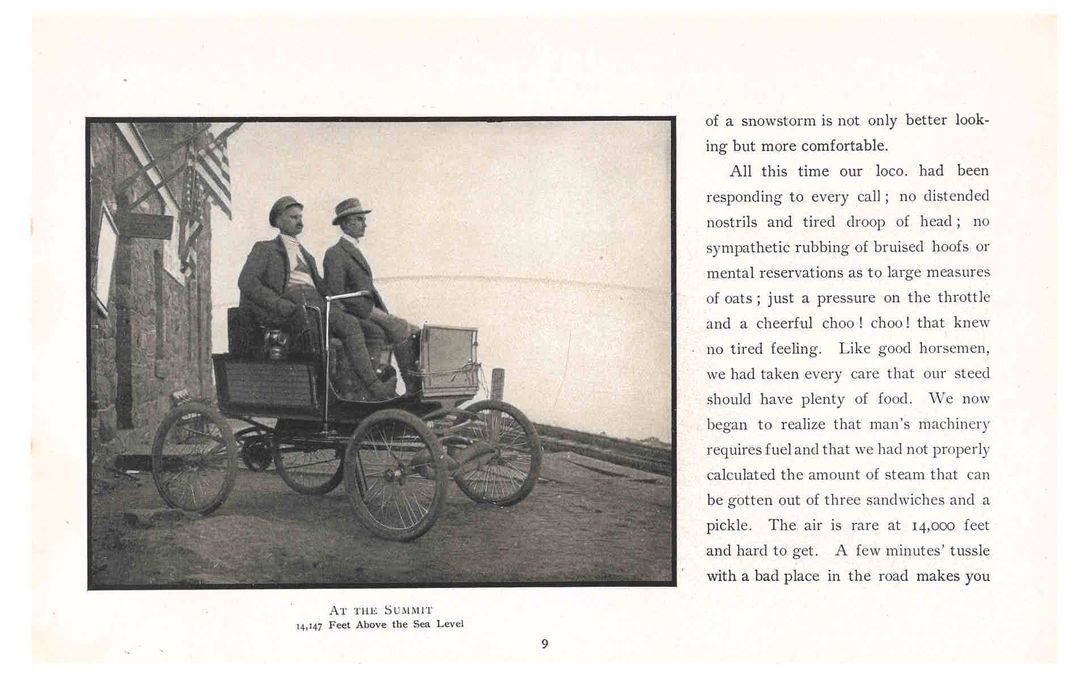
Their return trip back down turned out to be “perhaps more dangerous, but not such hard work.” Due to their tiredness and impatience to get to the bottom before dark, they took more chances. After passing the “Half-way House,” they continued their journey with the assistance of their “side-lights” as they made their way through the darkness. They discovered more bumps on the road than they had on the way up, and Mr. Felker wrote that their brake was so hot they “could smell the burning leather, and the metal parts could not be touched with the hand.”
According to Mr. Felker’s account, by 9:30 pm they reached Cascade and headed to bed as they “were too tired to stand around and brag much.” The next morning, the two men departed Cascade, traveled through Ute Pass to Manitou, ate breakfast in Colorado Springs, and reached Denver at 4:00.
